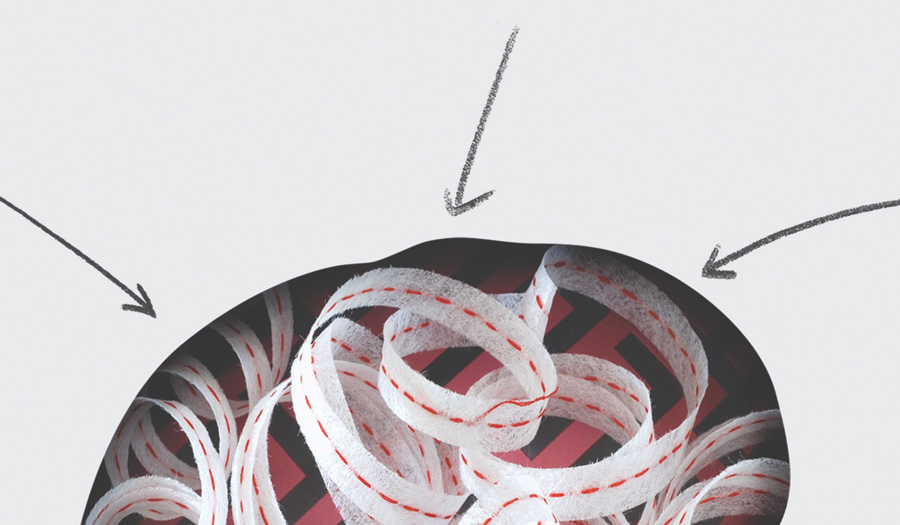 View / Download pdf version of this article
View / Download pdf version of this article
Two recent articles in the Best Practice Journal covered primary care approaches to young people with mental health
issues. This is part of an ongoing series with more to come on this topic in 2016. So far, the articles have introduced
current statistics relating to mental health and wellbeing in young people in New Zealand, guidance for identifying those
who need assistance and non-pharmacological approaches to frequently encountered mental health problems in young people
that can be carried out in primary care.
Key mental health statistics for young people in New Zealand include:1–3
- New Zealand has one of the highest rates of youth suicide in the OECD
- 10% of females and 5% of males aged 15 to 24 years report high levels of psychological distress
- In a sample of secondary school students covering 3% of the 2012 New Zealand secondary school roll, 21% of females
and 10% of males had seriously thought about suicide in the last 12 months
Risk factors for mental health issues in young people include events early in life, such as childhood trauma,
physical or sexual abuse, poverty and social deprivation.4 In addition, young people of Māori or Pacific
ethnicity and those who identify as LGBTI (lesbian, gay, bisexual, transgender or intersex) are at an increased risk of
experiencing mental health issues.
Opportunistic screening in primary care is a key strategy to detect young people in need of assistance.A
HEADS assessment (also referred to with multiple letters, e.g. HEEADDSSS) is a semi-structured interview covering aspects
related to Home, Education and Employment, Eating and Exercise, Activities and peers, Drugs and Alcohol, Depression and
suicide, Sexual health and the young person’s Safety and Strengths.
Key points for clinicians to consider when conducting a HEADS assessment include:
- Explain the purpose of the assessment so a young person does not wonder why they are being asked questions unrelated
to their visit
- Ensure that young people understand that information they provide is confidential
- Begin with topics that a young person is likely to find non-threatening
Depending on the information that is revealed from the HEADS assessment, further exploration of some topics may be warranted,
e.g. to examine feelings of depression or suicidal ideation or to assess for alcohol and drug misuse. There are many different
screening tools available for use in this situation; it is recommended that clinicians become familiar with a few in particular
that they are most comfortable using. Examples include the Patient Health Questionnaire (PHQ-2), Ask Suicide-Screening
Questions (ASQ), CRAFFT screening tool, Substances and Choices Scale (SACS) and the bestpractice “Depression in young
people” module which incorporates several of these tools.
 For further information, see: “Addressing mental health and wellbeing
in young people”, BPJ 71 (Oct, 2015).
For further information, see: “Addressing mental health and wellbeing
in young people”, BPJ 71 (Oct, 2015).
The second article in this series covered non-pharmacological strategies for the treatment of frequently encountered
mental health concerns in young people. This includes the initial assessment and management in primary care of young people
with depression and anxiety, who are self-harming, have eating disorders, are misusing drugs or alcohol or are subject
to bullying and social isolation.
Non-pharmacological strategies for managing young people with mental health conditions in primary care include:
- Building strength and resilience, including simple advice on improving sleep, exercise and diet, all of which can
influence a young person’s mood and psychological outlook
- Conducting structured problem solving; this incorporates basic principles of cognitive behavioural therapy (CBT) but
does not require specialised training to conduct, and is well suited to general practice
- Recommending online CBT resources (e-therapy), such as SPARX or Beating the Blues. E-therapy is most useful for young
people with depression and anxiety, but may also be beneficial to teach coping skills to any young person
experiencing mental health difficulties
Through the Prime Minister’s Youth Mental Health Project, DHB funding of primary mental health services is available
for all young people aged 12 – 19 years, including extended general practitioner or practice nurse consultations, brief
intervention counselling, group therapy or individual care; contact your local DHB for more information. In some areas,
funding may be available from a local PHO or DHB to cover the cost of extended appointments for people aged over 19 years.
 For further information, see: “Managing frequently encountered mental
health problems in young people: non-pharmacological strategies”, BPJ 72 (Dec, 2015).
For further information, see: “Managing frequently encountered mental
health problems in young people: non-pharmacological strategies”, BPJ 72 (Dec, 2015).
The final upcoming article in the series will address the role of medicines in the treatment of mental
health problems in young people, in particular when, and if, this is appropriate for patients aged under 18 years.
References
- Clark T, Fleming T, Bullen P, et al. Youth’12 Overview: The health and wellbeing of New Zealand secondary school
students in 2012. Auckland, NZ: The University of Auckland 2013. Available from: www.fmhs.auckland.ac.nz/assets/fmhs/faculty/ahrg/docs/2012-overview.pdf (Accessed
Oct, 2015).
- Patton GC, Coffey C, Cappa C, et al. Health of the world’s adolescents: a synthesis of internationally comparable
data. Lancet 2012;379:1665–75. http://dx.doi.org/10.1016/S0140-6736(12)60203-7
- Statistics New Zealand. NZ social indicators. Prevalence of psychological distress. 2014. Available from: www.stats.govt.nz/browse_for_stats/snapshots-of-nz/nz-social-indicators/Home/Health/prevalence-psych-distress.aspx (Accessed
Oct, 2015).
- Patel V, Flisher AJ, Hetrick S, et al. Mental health of young people: a global public-health challenge. Lancet 2007;369:1302–13. http://dx.doi.org/10.1016/S0140-6736(07)60368-7